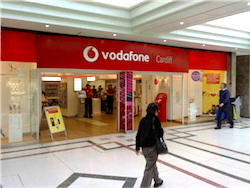Vodafone has passed the halfway mark of its Project Spring network modernisation programme, announcing it is now offering 65 percent LTE coverage across Europe.
The €8.5 billion project was launched in 2013, in a bid to improve Vodafone’s infrastructure. The UK-based operator revealed in its latest results this morning that it has modernised 61,000 mobile sites, building an additional 86,000 2G, 3G and 4G sites and upgrading 50,000 sites to plug into high capacity backhaul.
CEO Vittorio Colao said the programme was having a knock-on effect on network coverage and quality. LTE outdoor population coverage has almost doubled from 38 percent in 2014 to 65 percent now, covering 222 million people across Europe. The number of data sessions hitting 3MBps or more hit 87 percent, with a target to reach 90 percent by March 2016.
Italy had the most widespread LTE population coverage, at 76 percent, with 1.2 million 4G subscribers.
The rate of dropped calls has shrank from 0.9 percent in 2013 to 0.64 percent now.
In December, the operator signed a 15-year deal with advertising company JCDecaux to install network infrastructure in billboards and other hoardings, in an attempt to improve coverage.
Colao has been a critic of his operator’s own service in the UK, saying last year that it needed to “muscle up”. Vodafone has also scored poorly in third party and regulator assessments of its UK performance.
The CEO commented: “Our Project Spring investment programme is well advanced, with 4G coverage in Europe now 65 percent, dropped call rates down to 0.64 percent, and 26 million homes now passed by our own next generation networks: our customers are really beginning to notice the difference in experience that this investment delivers. We are confident that, over time, this will translate into further improvements in customer perception, ARPU and churn.”
Read more:
Vodafone UK hits halfway mark in LTE rollout
Operators dodge national roaming threat, pledge fresh spending



